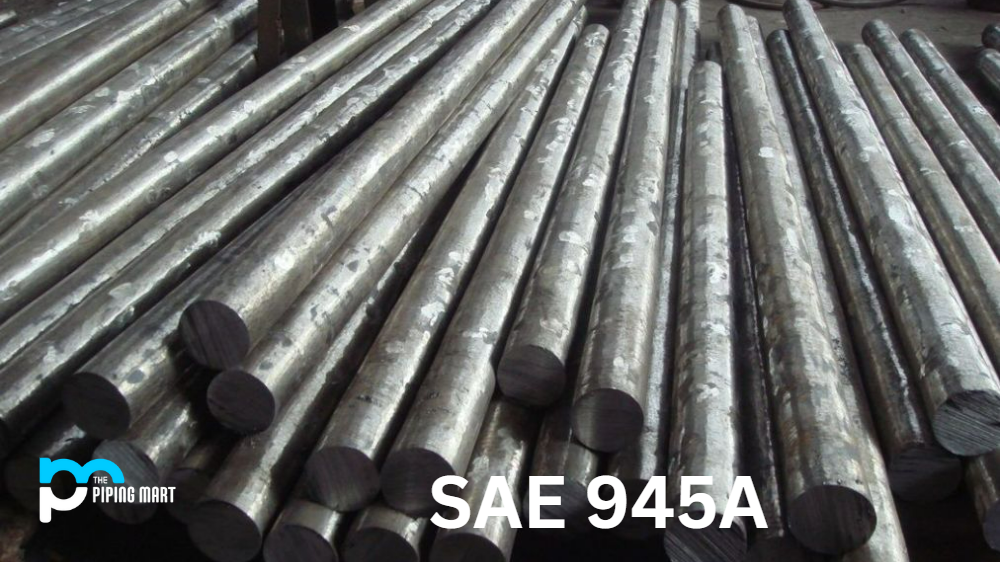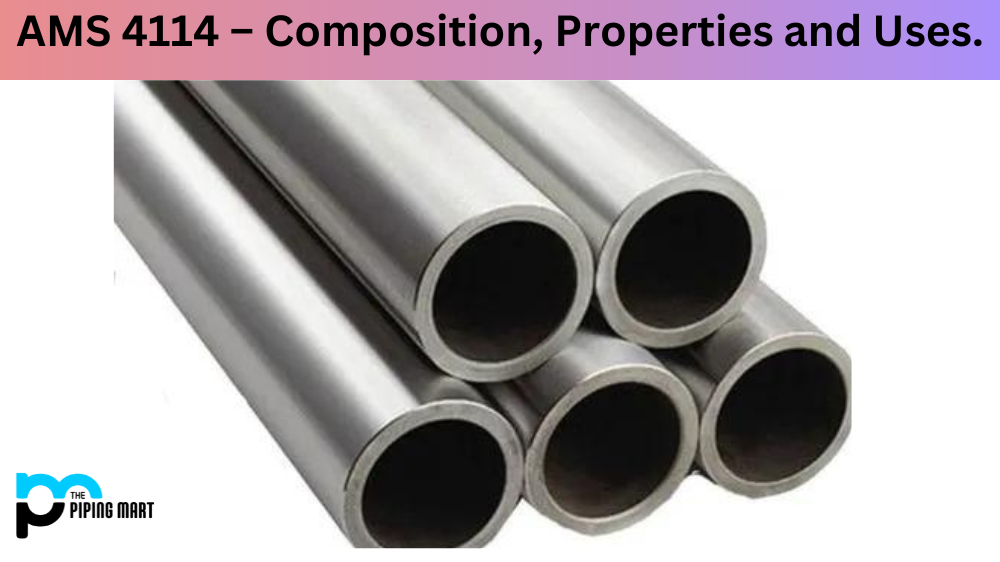SAE 945A is a widely used alloy steel with exceptional properties. It is known for its high tensile strength, durability and resistance to corrosion. In this blog post, we will delve into the composition, physical and mechanical properties, uses, hardness, heat treatment, welding, and corrosion resistance of the alloy.
SAE 945A Composition
SAE 945A is a low alloy steel containing chromium, nickel, and molybdenum. It also has small amounts of carbon, manganese, silicon, and phosphorus. Combining these elements makes it a solid and durable material that can withstand high temperatures and heavy loads.
|
Element
|
Weight %
|
|
C
|
0.15
|
|
Mn
|
1.00
|
|
P
|
0.04
|
|
S
|
0.05
|
|
Si
|
0.90
|
SAE 945A Physical Properties
The physical properties of SAE 945A are impressive. It has a 7.85g/cm3 density and a melting point of 1420 – 1465°C. It is also highly resistant to corrosion and oxidation, making it a popular choice for harsh environments.
SAE 945A Mechanical Properties
The mechanical properties of SAE 945A make it suitable for many industrial applications. It has a tensile strength of 690 MPa and a yield strength of 450 MPa. Its elongation at break is 22%, making it an ideal choice for applications that require flexibility and durability.
|
Properties
|
Conditions
|
||
|
T (°C)
|
Treatment
|
||
|
Density (×1000 kg/m3)
|
7.7-8.03
|
25
|
|
|
Poisson’s Ratio
|
0.27-0.30
|
25
|
|
|
Elastic Modulus (GPa)
|
190-210
|
25
|
|
|
Tensile Strength (Mpa)
|
450
|
25
|
(sheet and strip, plate, shapes and bar to 13 mm)
|
|
Yield Strength (Mpa)
|
310
|
||
|
Elongation (%)
|
22
|
||
|
Reduction in Area (%)
|
|||
SAE 945A Uses
SAE 945A is used in various applications, including aerospace, oil and gas exploration, the automotive industry, and tooling. It is used extensively to manufacture engine components, turbine blades, pumps, and valves.
SAE 945A Hardness
The hardness of SAE 945A can be increased by a heat treatment called quenching and tempering. The hardness can range from 35 to 50 HRC depending on the treatment. The higher the hardness, the greater the tensile strength and durability of the material.
SAE 945A Heat Treatment
SAE 945A can be heat-treated to improve its strength and durability. Quenching and tempering is the most common treatment used to increase the hardness of the material. The material is heated to a specific temperature and then rapidly cooled in water or oil. It is then tempered, which involves heating it to a lower temperature to relieve the stresses caused by quenching.
SAE 945A Welding
SAE 945A can be welded with care to avoid cracking and brittleness. It is recommended to use preheat and post-weld heat treatment to reduce the likelihood of cracking. Choosing welding material and technique ensures a strong and durable weld.
SAE 945A Corrosion Resistance
The corrosion resistance of SAE 945A is excellent. It is highly resistant to rust, oxidation, and corrosion, making it an ideal choice for harsh environments. It is often used in offshore drilling equipment, pipelines, and other applications where corrosion is a concern.
Conclusion
SAE 945A is an exceptional alloy steel with impressive physical and mechanical properties. Its strength, durability, and resistance to corrosion make it a popular choice in many industrial applications. It can be heat-treated to improve its hardness and welded with care to produce solid and durable welds. If you are looking for a material that can withstand high temperatures and heavy loads, SAE 945A is an excellent choice.




